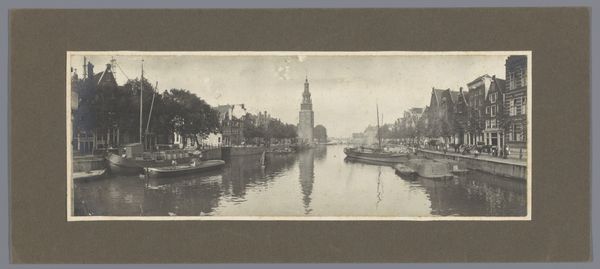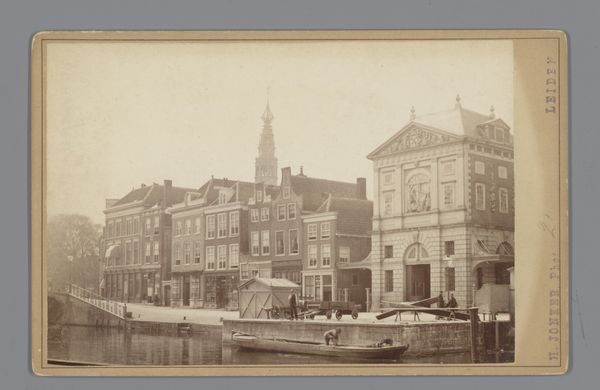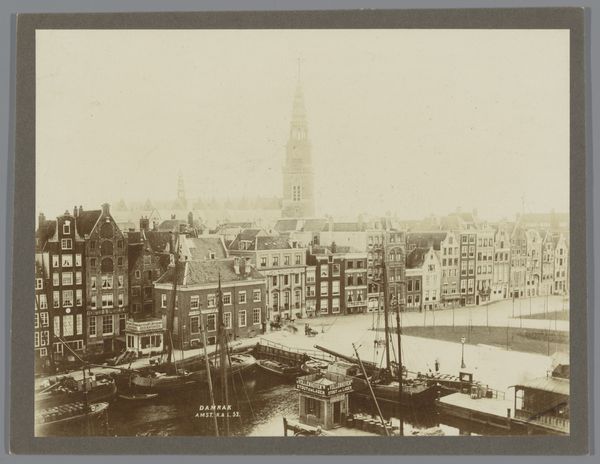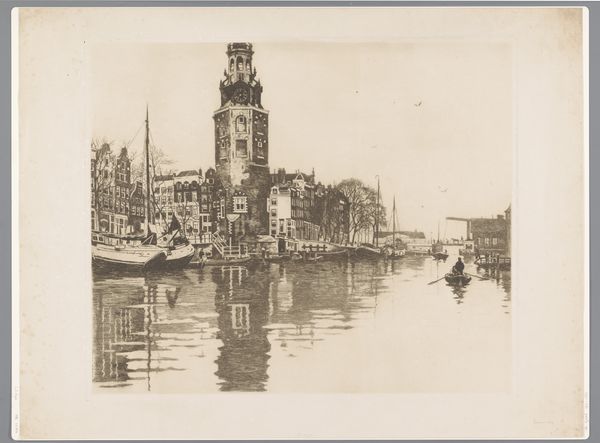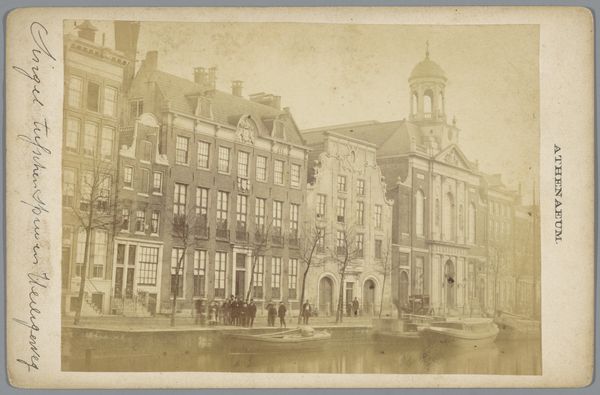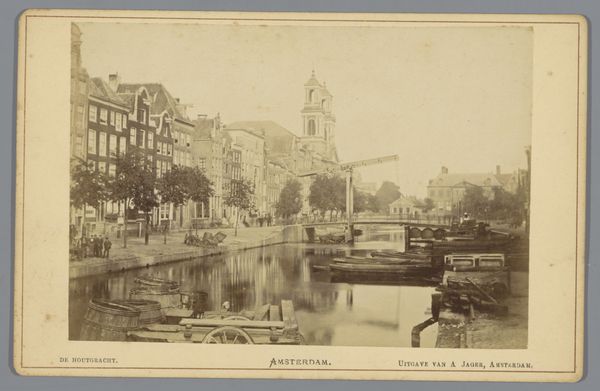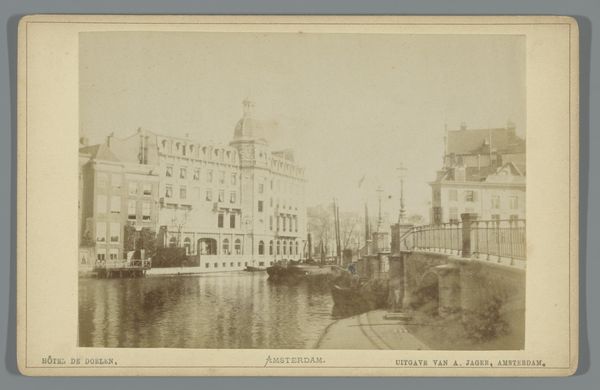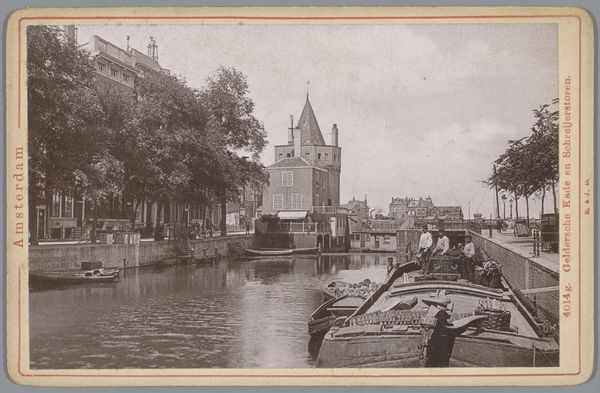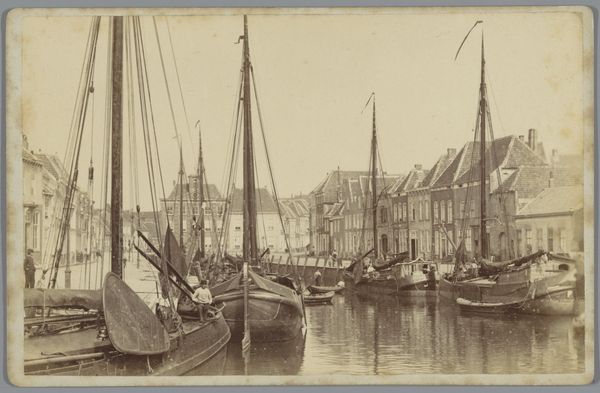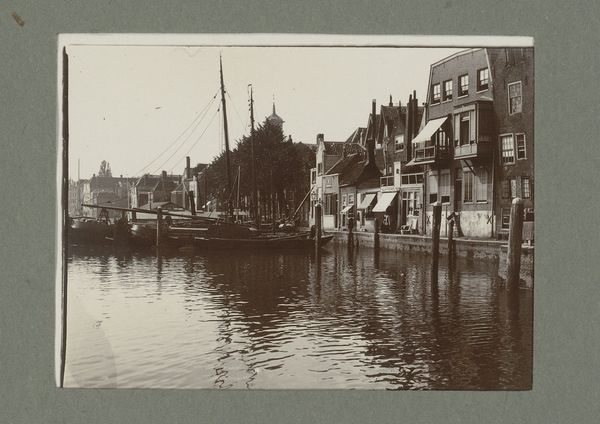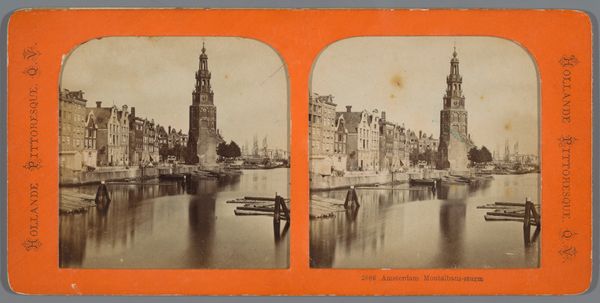
Gezicht op de Hoge der A te Groningen, met op de achtergrond de toren van de Der Aa-kerk c. 1880 - 1900
0:00
0:00
photography, gelatin-silver-print
#
dutch-golden-age
#
landscape
#
photography
#
coloured pencil
#
gelatin-silver-print
#
cityscape
Dimensions: height 96 mm, width 142 mm
Copyright: Rijks Museum: Open Domain
This photograph of Groningen, showing the Hoge der A and the Der Aa-kerk, was made by Johannes Gerardus Kramer using the wet collodion process, common in the late 19th century. Photographs like this one involved a delicate balance of chemistry and craft. The process required coating a glass plate with a light-sensitive emulsion immediately before exposure, and developing it while still wet. This meant photographers had to be both skilled technicians and artists, often working on location with portable darkrooms. Notice how the tonal range and clarity highlight the architectural details and bustling waterway, central to the town's economy. The tonal depth and detail achievable through this method elevated photography from mere documentation to a respected artistic medium. By understanding the labor-intensive processes behind early photography, we appreciate its value not just as a historical record but as a testament to the photographer's skill and the socio-economic context of the era.
Comments
No comments
Be the first to comment and join the conversation on the ultimate creative platform.
